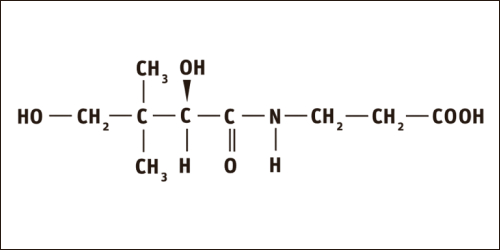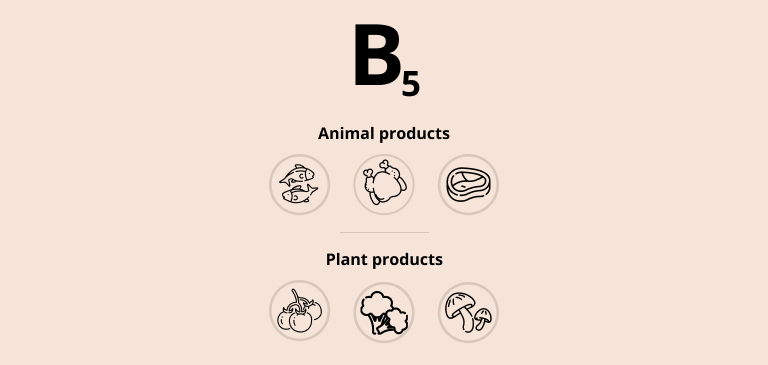Vitamin B5
Pantothenic acid
Year of discovery: 1931 | Roger J Williams and RW Truesdail
Vitamin B5 is part of the structure of coenzyme A, a compound that is a "junction" in several metabolic pathways and is involved in more than 100 different steps in the synthesis of lipids, neurotransmitters, steroid hormones and hemoglobin. Vitamin B5 plays an important role during the maintenance and repair of skin and hair tissues and cells, promotes the healing of wounds and lesions. and pantethine, which is a form of vitamin B5, normalizes blood lipid profiles.
Main sources of vitamin B5
Vitamin B5 is found in offal (liver, kidney), meat (chicken, beef), egg yolk, milk, fish, whole grains, potatoes, tomatoes, broccoli, mushrooms. Other: synthesized by intestinal microorganisms, but the effect of this synthesis on its levels among other nutrients is unknown.
Bioavailability of vitamin B5
The bioavailability of pantothenic acid from dietary sources is about 50%. Vitamin B5 is fairly stable when heated, but prolonged cooking time and prolonged high temperatures (such as boiling point) can cause increased loss of the vitamin's content. Pantothenic acid is also destroyed by freezing, canning or refining.
Risks associated with insufficient or excessive intake of vitamin B5
Vitamin B5 deficiency is very rare, and symptoms include general failure of all body systems. Symptoms include fatigue, nausea, vomiting, headaches, and a tingling sensation ("burning feet" syndrome). No side effects have been reported with high intake of vitamin B5.




